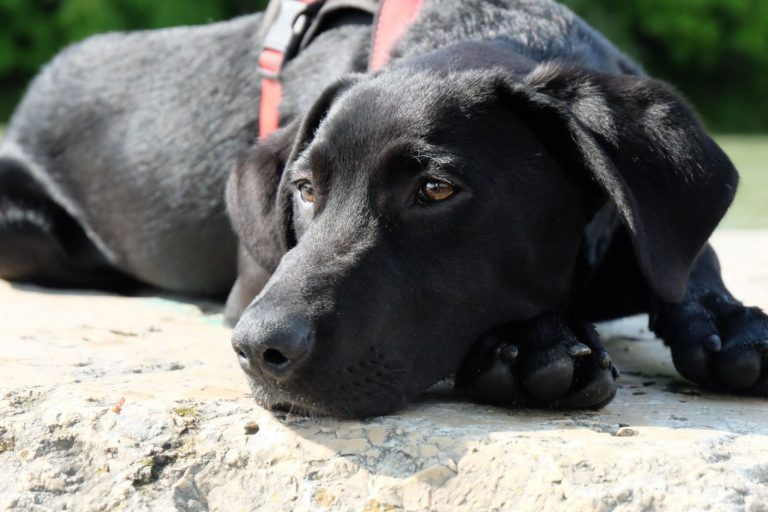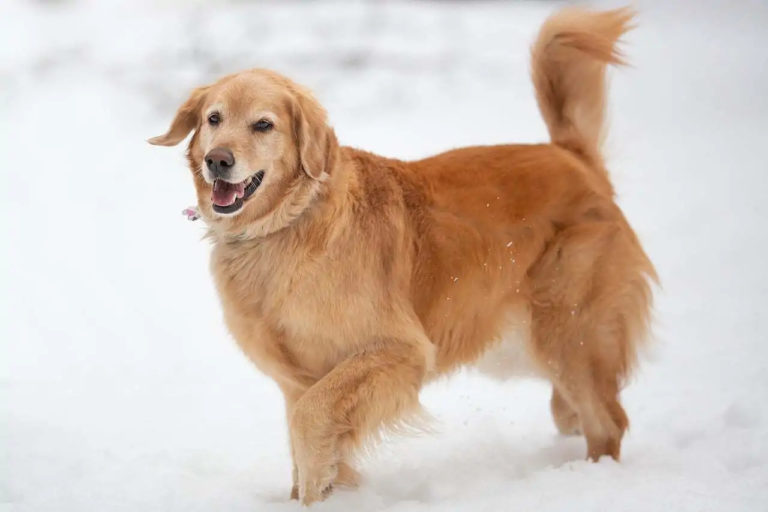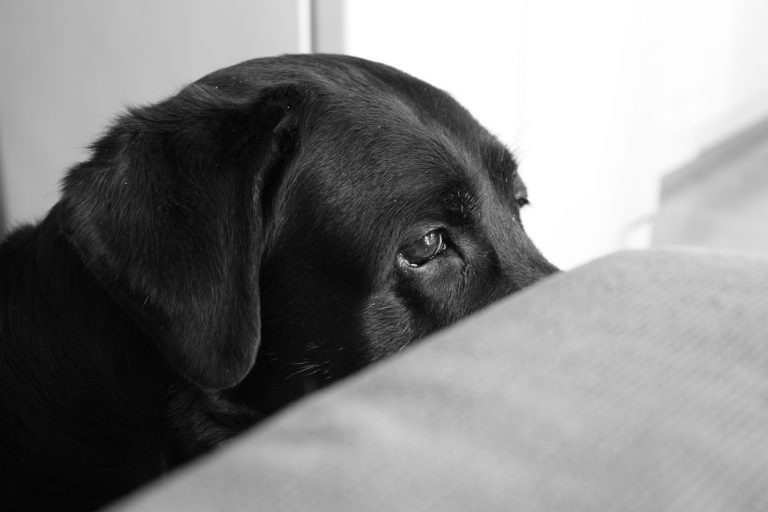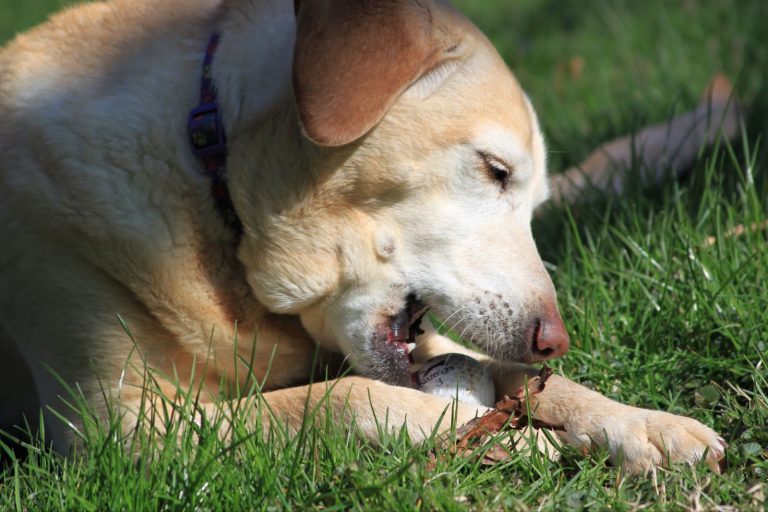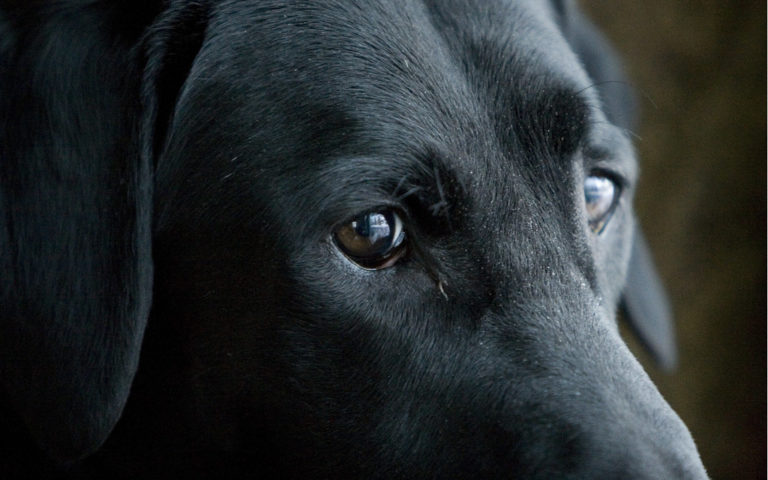Chocolate Labrador Retrievers can get white fur easily. It is likely that your chocolate lab has the same problem, though he will probably try his hardest to keep it hidden. If your dog is turning white, he could have several health problems at play. White fur means there is inadequate pigment in the dog’s skin.
This means the dog’s coat cannot hold water and keep its own moisture level regulated. The result? Your dog will end up with a dry, powdery coat that turns into white fur overnight. His coat becomes so limp and brittle that it breaks off in clumps as soon as you reach out to stroke him or even picks up snow grains on its own to form clumping hairs without any visible source of support.
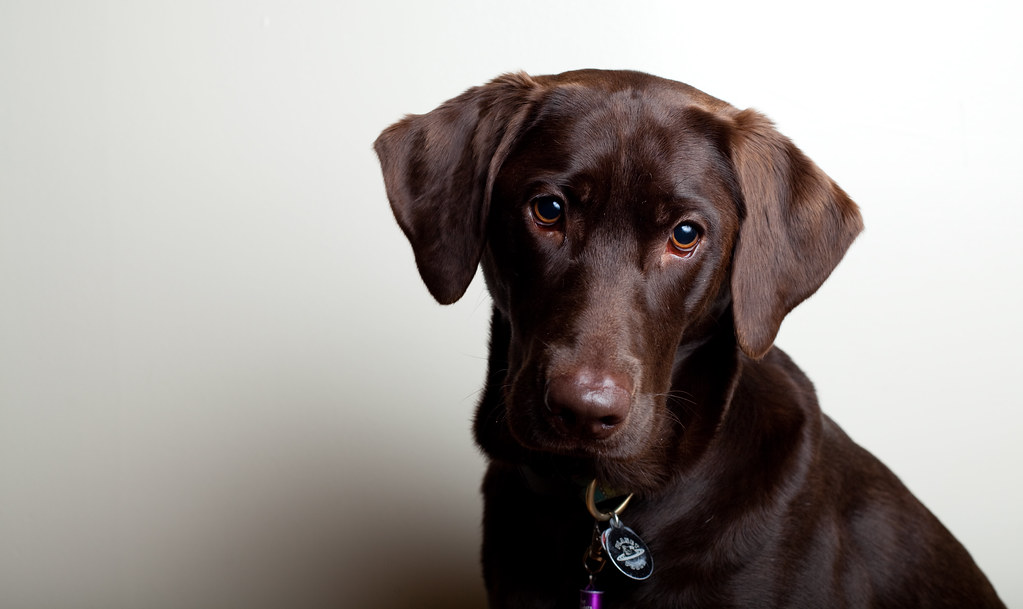
It’s possible that your chocolate Lab’s hair is going white owing to the natural process of aging, which is the most prevalent cause of greying hair. Stress inherited predisposition, or another undiagnosed medical condition could also be at blame. Vitiligo is another disorder that can cause white hair to appear on dogs, although it is a very uncommon condition and is not the most likely cause.
If your chocolate lab is showing signs of turning white, he may have alopecia (conditioning his coat). This is when the hair on the animal’s skin disappears altogether as a result of a lack of pigment causing an excess of heat or sunlight exposure. While this may appear as pure white fur from a distance, nearby objects and people will still see black spots where there were once hair follicles. In other words, alopecia isn’t something that happens instantly on its own but rather requires specific conditions for it to develop.
What Can Cause Chocolate Labrador Retriever’s White Fur?
Several biological and extraneous factors might influence the appearance and health of your dog. Some of these changes include pigment loss, resulting in greying or white hair.
Five causes of white chocolate Labs:
- Health Problems
- Vitiligo
- The Normal Aging Procedure
- Stress
- Genetics
Health Problems
It is crucial to be aware of these potential health concerns that may cause your Lab’s hair to change color. The common health issues affecting the Labrador’s coat can be:
Hypothyroidism – Several dog breeds, including Labrador Retrievers, are susceptible to this illness. Dogs aged 4-10 are most at risk. Hypothyroidism can result in hair loss, a lackluster and thinning coat, and dry skin. In addition to weight gain, muscle loss, tiredness, and ear infections, other symptoms include weight increase.
Cushing’s Syndrome – This ailment is caused by an overproduction of the stress hormone cortisol, and it can result in skin and hair problems as well as premature greying of the face and muzzle. Additional Cushing’s syndrome symptoms include increased appetite and thirst, excessive panting, weariness, and lethargy.
Liver or Kidney Disease – Due to the accumulation of toxins in the body, greying hair is a rare indication of liver or kidney disease. If this is the case, a veterinarian would likely diagnose the issue before the hair begins to change color, although it remains a possible reason.
Vitiligo
This disorder causes depigmentation and is found in cats, dogs, and humans, but it is extremely rare. Hair and skin can also turn white due to vitiligo.
Whenever melanocytes (the cells responsible for making the pigment melanin) are killed off or damaged, the body’s natural pigmentation fades. If these cells aren’t replaced, your skin and hair will eventually turn white.
You shouldn’t worry about your pet because of the vitiligo itself; it’s a harmless ailment. However, a veterinarian should determine if there is a more fundamental issue, such as an autoimmune disorder or toxic exposure.
In general, vitiligo can be divided into two categories:
- Focal vitiligo, sometimes known as “white nose,” is the loss of pigmentation only around the nose.
- “Snowflake” refers to a person with generalized vitiligo, in which all of their body’s pigment is gradually lost. As long as there are no underlying health issues, you can continue to care for your Lab the same way you always have because this is merely aesthetic.
The Normal Aging Procedure
The most typical cause of your chocolate Lab’s white hair is old age. Similar to humans, the hair color of your Lab can vary over time. However, greying often begins on and around the face before spreading to the rest of the body. Dogs (and humans) develop fewer pigments that produce hair color as they age. The pigments in hair, however, decay far more slowly than the melanin that colors our skin, so this process may cease well before we observe any effects on the hair.
Stress
Dogs, like humans, are susceptible to a wide range of physical responses and effects of stress. Anxiety and stress might lead dogs to grey prematurely.
Another study discovered a correlation between early facial greying and anxiety and impulsivity.
These tendencies are similar to what has been observed in people, where stress-related greying of hair has been shown.
Scientists believe this is due to the physiological processes behind stress, hormones, and pigment cell connections.
Genetics
Your Lab’s genes can play a huge impact in determining if and when their hair begins to turn grey or white. Conditions inherited from one’s parents may cause hair color changes.
There are a few other health conditions that may cause white fur in dogs. If your dog is developing white fur due to a skin condition, it is important to know what is causing it.
Skin conditions such as folds, wrinkles, and tags are more likely to develop white fur than skin tags. Another thing to keep in mind is that alopecia is a condition that affects the entire body, not just the hair. If your dog only has white hair on his head, you may not even know he has the condition.
What is Alopecia?
Alopecia, or the lack of hair, is a condition that affects the skin, scalp, and whole body of dogs. It is a hereditary disorder inherited in puppies from their parents. Affected pups usually have no visible signs until they are about six to eight months of age, at which time they may start showing white spots on the bodies and heads. The most common form of alopecia is called “benign” or “non-cancerous”, which is when the hair on the head is white.
The rest of the body is more likely to be affected by other types of alopecia, or “aggressive” and “carcinogenic”. These are the types of alopecia that may lead to an increased risk of developing cancer.
Symptoms of Alopecia in Dogs
The first thing you should do if you think your dog has alopecia is to get a DNA test to rule out breed-specifical conditions.
Alopecia is inherited as an autosomal recessive trait. This means that any two dogs with the condition can have either white or non-white coats. If your dog is white, he probably has alopecia. If he is non-white, he most likely does not.
What is the treatment for white Labrador fur?
There is no known cure for alopecia in dogs. The condition is hereditary, so when one parent has the hairless gene, their puppies also have a 50/50 chance of being affected. Treatment for animals with alopecia consists of managing the symptoms and not overgrooming.
Overgrooming can strip the coat of its natural oils and dry out the hair. This can lead to less hair and a more brittle coat. Over-the-counter products such as conditioners and oils may help with the appearance of a white coat but will not do any good for the underlying condition.
Conclusion – Is Your Chocolate Labrador Turning White?
What Can You Do If You Notice That Your Chocolate Lab Is Starting to Turn White?
There is nothing you can do to avoid the effects of time from having an adverse impact on your chocolate Lab or to stop it from getting older. As it gets older, it will most likely undergo some alterations to its look. In a similar vein, you are powerless against your genes or the illnesses that run in your family.
If, on the other hand, your chocolate Lab all of a sudden starts becoming white, your first step should always be to consult a veterinarian to rule out the possibility of more serious diseases or other health concerns. If your canine companion is in good health, you should make it a priority to care for him well into his senior years.





